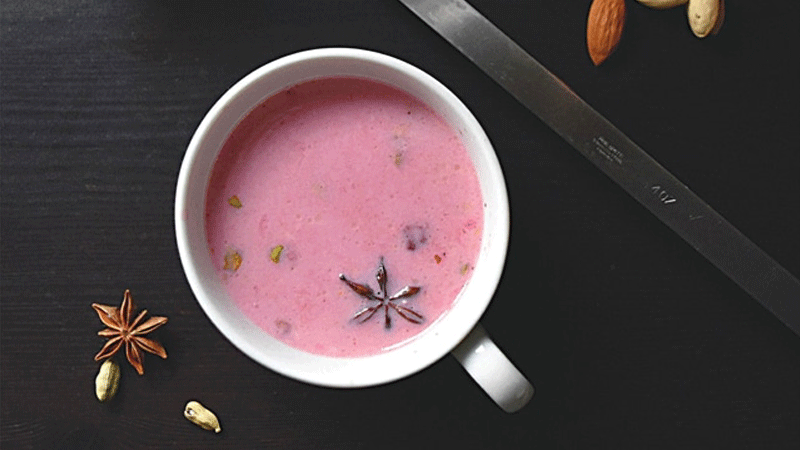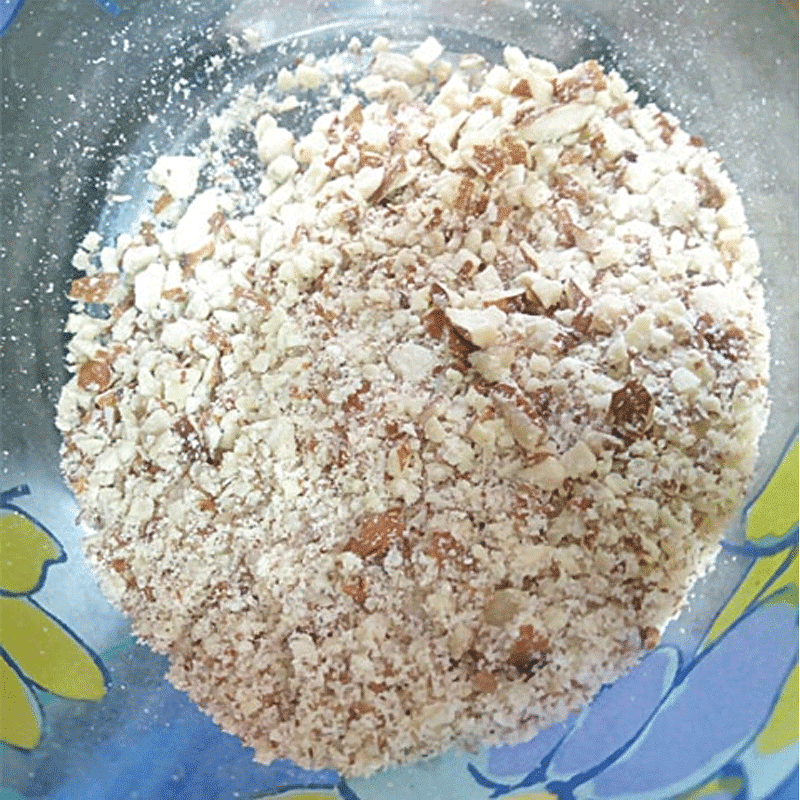How to make delicious hot Kashmiri chai at home
Sign up now: Get ST's newsletters delivered to your inbox

Noon chai is a special pink-coloured tea which has a creamy, buttery and slightly thick consistency, but is thin enough to sip gently
PHOTOS: MUBASHAR NAQVI
Mubashar Naqvi
Follow topic:
KASHMIR (DAWN/ASIA NEWS NETWORK) - Kashmir is known not only for its unrivalled natural beauty - snow-covered mountain peaks, blue rivers and rich culture - but also for its mouthwatering traditional food such as rogan josh, dum olav, matschgand, goshtaba, modur pulav and aab gosht.
To wash all the lovely food down, the Kashmiris have a special pink-coloured tea called noon chai, which has a creamy, buttery and slightly thick consistency, but is thin enough to sip gently.
The word noon means salt in Kashmiri and several other Indo-Aryan languages such as Bengali, Rajasthani and Nepali. That is why one can easily guess that traditional Kashmiri noon chai will be salty. Yes, if tea can be sugarless, then why not salty? However, sugar can be added if one prefers his chai sweet.
The popularity of noon chai across South Asia can be gauged by the many names it is known by. It is served in many parts of Pakistan as Kashmiri chai, often with sugar and nuts at special occasions, weddings and during the winter months. Kashmiri people in Pakistan also call it sabz chai. It is also served in Afghanistan, where it is known as shor chai. Pink tea and sheer chai are also Kashmiri chai by another name.
The origins of Kashmiri tea are unknown, though it most likely emerged in the area - the green tea leaves used to make it are found in abundance in Himalayan regions such as China, Pakistan, Nepal, India and Bhutan.
There is no specific season or time for enjoying a cup of noon tea, though it is associated with cold weather because of its warming ingredients. It is an integral part of Kashmiri tradition and is consumed at least two to three times daily with accompaniments such as kulchas, sheermaal, Kashmiri breads, kandir tchot and baqarkhanis.

Green tea leaves used in the brewing of Kashmiri tea are a powerful antioxidant and come from the camellia sinensis plant. It inhibits the formation of blood clots and wards off chances of stroke and heart attack.
It is believed in Kashmiri folklore that noon chai is refreshing in the heat, while in winters, it warms you up. Not only is it nutritious, but L-theanine, an amino acid component of the tea, also helps in reduction of stress and anxiety.
"In Ramazan particularly, when the digestive tract is a bit disturbed due to binging after iftar, sipping a cup of Kashmiri tea can help relieve heartburn, bloating and spasmodic pain in the tummy as it contains cardamom and baking soda," says Ms Shugufta Sheikh, a senior government teacher in Muzaffarabad.

"It is also a great way to wake up in Sehri," she adds. "Generally, anaemics should avoid Kashmiri tea as it can cause a drop in iron levels because of polyphenolics in the green tea which function as iron chelators (small molecules that bind very tightly to metal ions) and prevent absorption of iron."
Kashmiri tea is energising, increases mental alertness, reduces headaches and upholds fluid levels in the body. Joint pains are also known to disappear to some extent if a pinch of cinnamon is added to the brew. Similarly, the saffron which is added to the tea can lift your spirits on a cold, miserable day.
"Traditionally, noon chai or Kashmiri chai is served saltish, but many people prefer sweet tea. I like both," says Shaista Rehman, a Muzaffarabad-based youth activist. "Usually, our breakfast consists of Kashmiri tea, omelette and traditional baqarkhani. Though there are number of recipes of Kashmiri tea, I like the one which is made with herbs from the forests of the scenic Neelum Valley."
Kashmiris living on both sides of the divided state and anywhere in the world equally enjoy its delicate flavour and have at least one cup a day, mostly in the evenings.
In Muzaffarabad, the capital city of Azad Jammu and Kashmir, tourists from every nook and corner of the country run around asking for a traditional cup of noon chai and flock to Madina Market, Main Bazaar and other adjacent areas to enjoy some with a piece of traditional flatbread.

Making a cup of Kashmiri chai is a labour of love, but the taste is worth the time and effort.
Here is a recipe that makes two cups of noon chai:
Ingredients
4 cups water (2 cups cold water)
4 green cardamoms
2 to 3 tsp green tea leaves
A pinch of baking soda or saffron (for the beautiful pink hue)
2 cups milk
Salt and/or sugar (according to taste)
Crushed nuts (almonds and pistachios preferably)
Cream (optional)
Method
- Pour two cups water in a pot with a broad base. Crush green cardamoms in your hand until the seeds come out. Add both the seeds and shells in the water. Add the green tea leaves. Add the baking soda or saffron - it will give the tea its pink colour.
- Let the mixture simmer and boil for about 20 minutes, until the water is reduced by half. Now add two cups cold water while the mixture is boiling and stir. After adding the water, let it simmer for five to 10 minutes. While it simmers, boil the milk in another pot (you can add more cardamoms to milk, if you want). Keep stirring the mixture.
- Add the tea mixture to the milk. Then add salt or sugar or both, according to your preference. Keep boiling the tea - the more you boil, the stronger the tea will be. Now finally pour the tea in cups, add the crushed nuts and enjoy a hot cup of noon chai.

